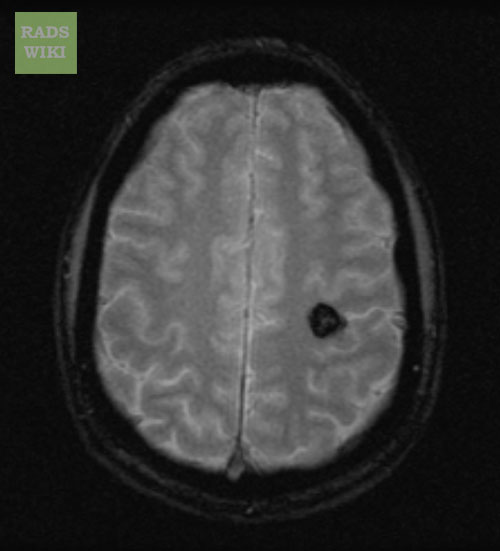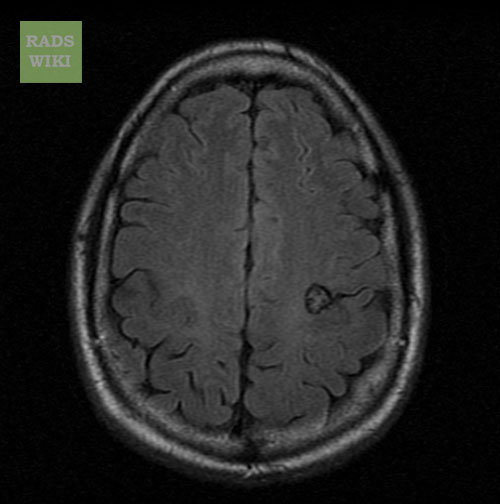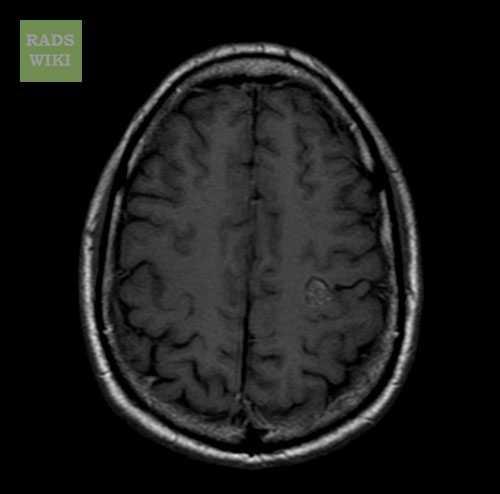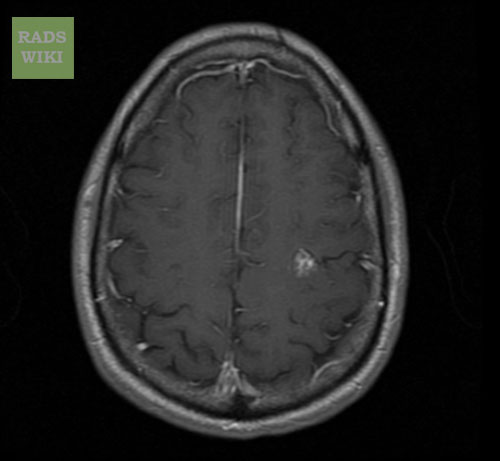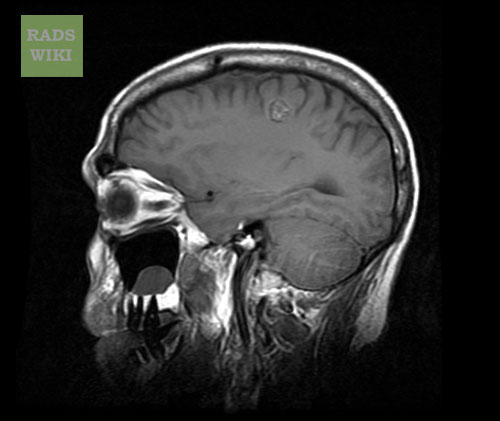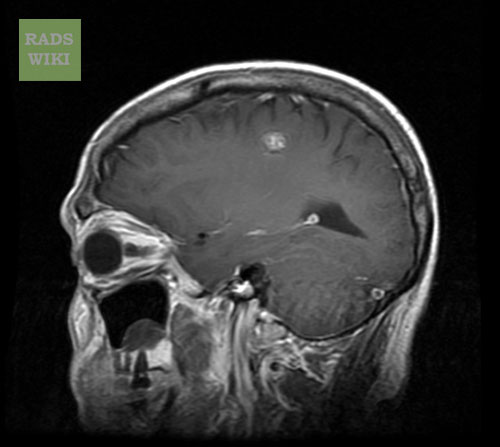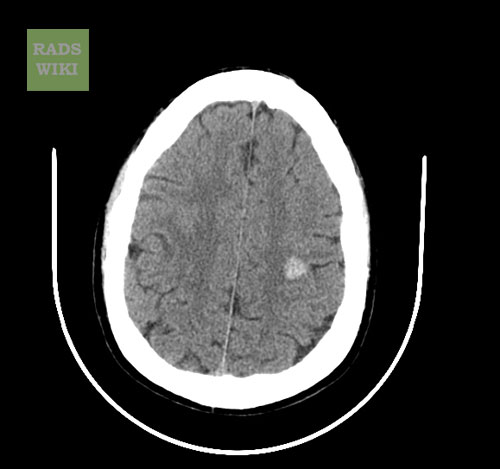Cavernous angioma MRI: Difference between revisions
(→MRI) |
No edit summary |
||
| (4 intermediate revisions by 2 users not shown) | |||
| Line 1: | Line 1: | ||
__NOTOC__ | |||
{{Cavernous angioma}} | {{Cavernous angioma}} | ||
{{CMG}}<nowiki>; {{AE}}[[User:Edzelco|Edzel Lorraine Co, D.M.D., M.D.]] | {{CMG}}<nowiki>; {{AE}}[[User:Edzelco|Edzel Lorraine Co, D.M.D., M.D.]] | ||
| Line 7: | Line 8: | ||
==[[MRI]]== | ==[[MRI]]== | ||
*These [[lesions]] are usually described as [[popcorn-like]], smooth, | *These [[lesions]] are usually described as [[popcorn-like]], smooth, [[well-circumscribed]] complex lesions.<ref name="pmid33091393">{{cite journal| author=Rafee S, Killeen RP, Tubridy N| title='Popcorn' in the Brain: A Cause for Confusion. | journal=Am J Med | year= 2021 | volume= 134 | issue= 2 | pages= 216-217 | pmid=33091393 | doi=10.1016/j.amjmed.2020.09.014 | pmc= | url=https://www.ncbi.nlm.nih.gov/entrez/eutils/elink.fcgi?dbfrom=pubmed&tool=sumsearch.org/cite&retmode=ref&cmd=prlinks&id=33091393 }} </ref> | ||
*There is a foci of | *There is a foci of [[mixed-signal intensities]] in the core, which signifies the presence of [[hemorrhage]] in different stages of evolution. | ||
*On [[T1-weighted images]], there is a [[low-signal-intensity]] [[hemosiderin]] rim bordering the heterogeneous core | *On [[T1-weighted images]], there is a [[low-signal-intensity]] [[hemosiderin]] rim bordering the heterogeneous core. | ||
*[[Focal hypointense nodules]] are usually associated with smaller [[cavernous malformation lesions]] in both [[T1- and T2-weighted sequences]]. These small lesions become more evident in [[gradient-echo images]] due to increased susceptibility effects of the sequences. | *[[Focal hypointense nodules]] are usually associated with smaller [[cavernous malformation lesions]] in both [[T1- and T2-weighted sequences]]. These small lesions become more evident in [[gradient-echo images]] due to increased susceptibility effects of the sequences. | ||
| Line 36: | Line 37: | ||
[[Category:Genetic disorders]] | [[Category:Genetic disorders]] | ||
[[Category:Dermatology]] | [[Category:Dermatology]] | ||
[[Category: | [[Category:Up to Date]] | ||
Latest revision as of 13:39, 12 May 2022
|
Cavernous angioma Microchapters |
|
Diagnosis |
|---|
|
Treatment |
|
Case Studies |
|
Cavernous angioma MRI On the Web |
|
American Roentgen Ray Society Images of Cavernous angioma MRI |
Editor-In-Chief: C. Michael Gibson, M.S., M.D. [1]<nowiki>; Associate Editor(s)-in-Chief: Edzel Lorraine Co, D.M.D., M.D.
Overview
Diagnosis can be made through incidental findings from magnetic resonance imaging (MRI) screening. A gradient-echo sequence should be utilized to unmask punctate lesions which can go undetected. These lesions are more visible on FLAIR imaging than on T2 weighing. As compared to T2 weighing, FLAIR imaging has more suppression of free-flowing fluid signals.
MRI
- These lesions are usually described as popcorn-like, smooth, well-circumscribed complex lesions.[1]
- There is a foci of mixed-signal intensities in the core, which signifies the presence of hemorrhage in different stages of evolution.
- On T1-weighted images, there is a low-signal-intensity hemosiderin rim bordering the heterogeneous core.
- Focal hypointense nodules are usually associated with smaller cavernous malformation lesions in both T1- and T2-weighted sequences. These small lesions become more evident in gradient-echo images due to increased susceptibility effects of the sequences.
-
MRI: Cavernous malformation
-
MRI: Cavernous malformation
-
MRI: Cavernous malformation
-
MRI: Cavernous malformation
-
MRI: Cavernous malformation
-
MRI: Cavernous malformation
-
MRI: Cavernous malformation
References
- ↑ Rafee S, Killeen RP, Tubridy N (2021). "'Popcorn' in the Brain: A Cause for Confusion". Am J Med. 134 (2): 216–217. doi:10.1016/j.amjmed.2020.09.014. PMID 33091393 Check
|pmid=value (help).
